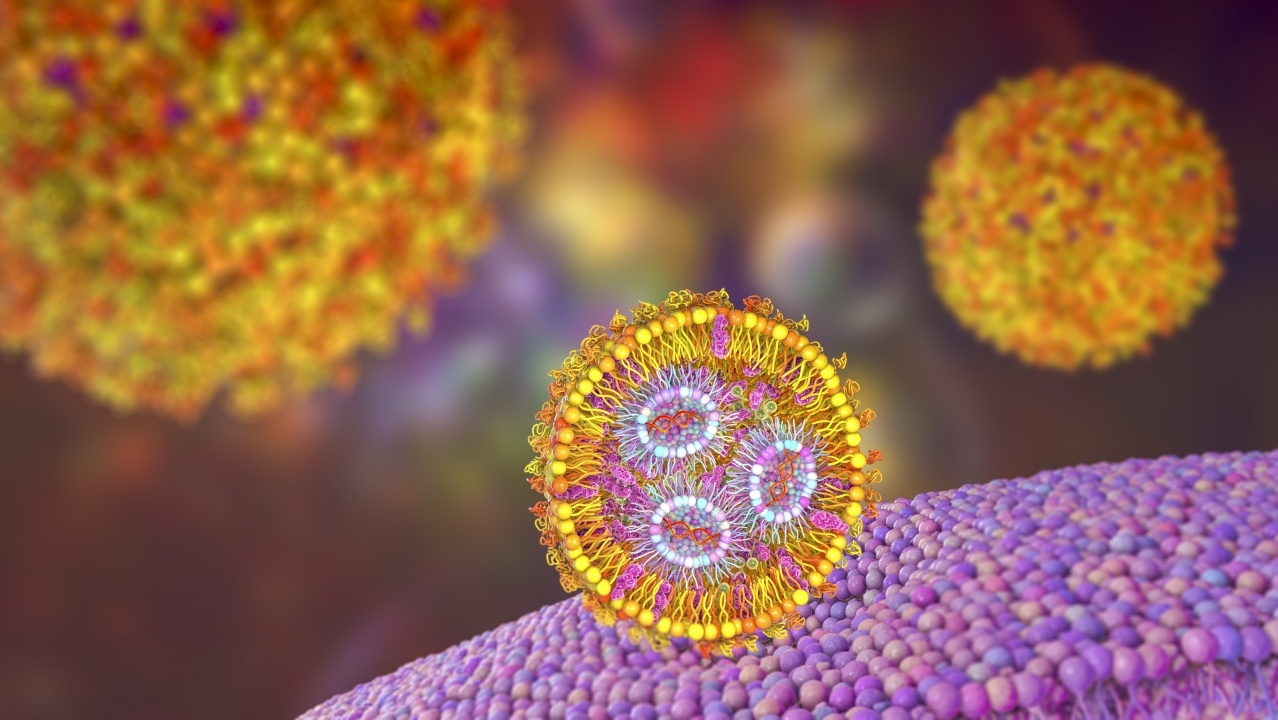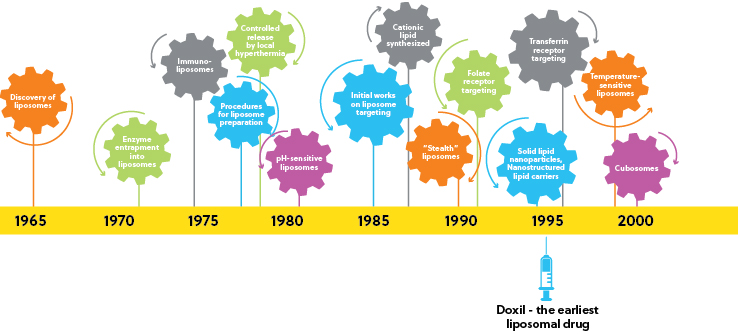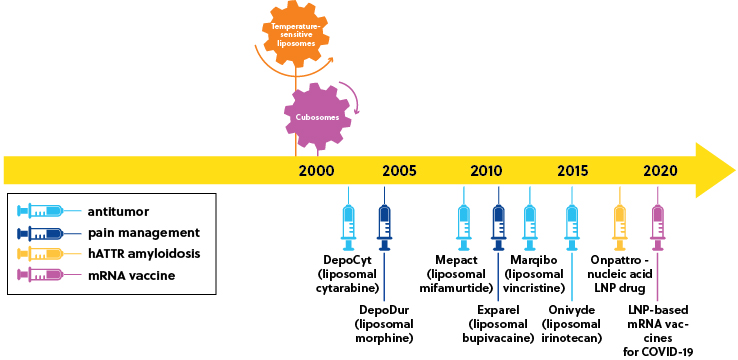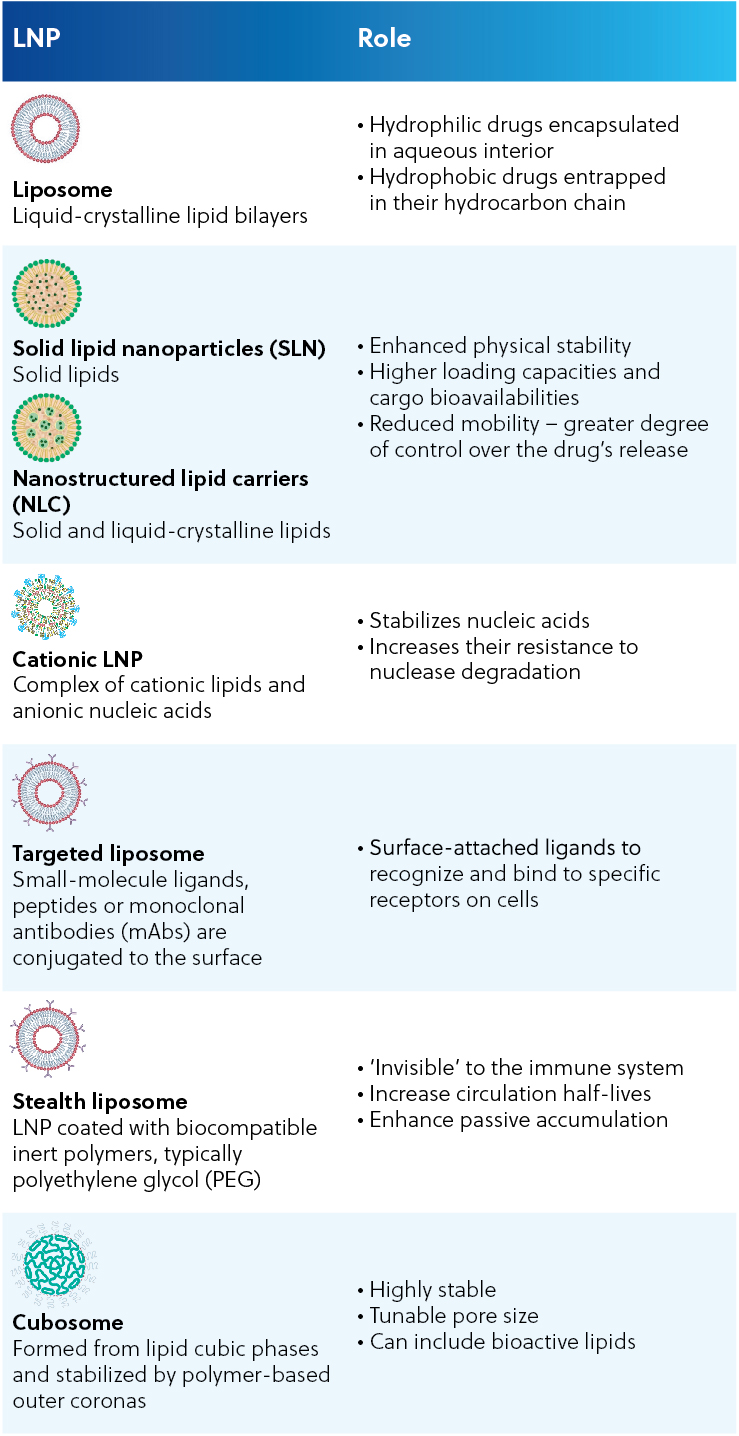Gain new perspectives for faster progress directly to your inbox.

It’s been years in the making, but the promise of messenger (m)RNA vaccines has finally been realized, thanks to a global pandemic that accelerated research and innovation in the field. But the success of mRNA vaccines would not have been possible without another lynchpin technology — the lipid nanoparticles (LNPs) that protect mRNA and deliver it into cells. This article will discuss the landscape of lipid nanoparticle research and future opportunities for nanotechnology beyond COVID-19.
Learn more about the journey from liposomes to lipid nanoparticles in our Insight Report on nanotechnology and its application in drug delivery, the role it plays in enabling the RNA revolution, and the opportunities ahead in cosmetics, agriculture, and beyond.
Nanotechnology and mRNA vaccines — a success story?
While several vaccines have been deployed in the fight against SARS-CoV-2, the two lipid nanoparticle-based mRNA vaccines from Moderna and Pfizer–BioNTech have been the most widely used, demonstrating the pivotal role of nanotechnology in the response to the COVID-19 pandemic. The large-scale rollout of these vaccines in 2021 changed the course of the pandemic, causing a remarkable decline in COVID-19 cases.
However, due to the rapid spread of the virus, several new variants of SARS-CoV-2 have arisen and are expected to emerge, creating an enormous public health challenge. Variants of concern such as Delta and Omicron have impacted vaccine efficacy by reducing the function of neutralizing antibodies. Yet, nanotechnologies may hold the key to tackling the SARS-CoV-2 variant challenge. Scientists are currently exploring various ways of utilizing nanotechnology for this purpose, including nanoparticle, vaccine-elicited, neutralizing antibodies, engineered neutralizing antibodies, and “nanodecoys”. The latter approach involves creating decoy nanoproteins that interact with the angiotensin-converting enzyme-2 (ACE2) receptor expressed on cells, inhibiting the binding of the virus to ACE2, and protecting host cells from infection. As these nanotechnologies are deployed to hasten the end of the novel coronavirus pandemic, how can we apply the learnings from this intense research effort to other areas of unmet need, including other global infectious diseases?
The development of lipid nanoparticle technology
Before we look to the future, let’s revisit the history of lipid nanoparticle technology. It all began in 1965 with the discovery of liposomes: closed lipid bilayer vesicles that spontaneously self-assemble in water to form fatty capsules. Researchers immediately saw their promise in drug delivery due to their ability to encapsulate small-molecule drugs and enhance their aqueous solubilities (it is known that over 40% of these agents exhibit low solubility in water). Since the initial discovery of liposomes, the technology has been continually tweaked and refined, optimizing the functionality of lipid nanoparticles to create extremely versatile drug delivery platforms and liposomal drugs.
Although currently in the spotlight as a vital component of the COVID-19 mRNA vaccines, lipid nanoparticles have been successfully utilized as drugs for decades. In 1995, Doxil , an LNP-based formulation of the antitumor agent doxorubicin, became the first approved liposomal drug. Another liposomal drug, Epaxal, is an LNP formulation of a protein antigen used as a hepatitis vaccine. Hot on the heels of this advancement, 2018 saw the US Food and Drug Administration’s approval of Onpattro (patisiran), an LNP-based short interfering RNA for the treatment of polyneuropathies induced by hereditary transthyretin amyloidosis. This pivotal milestone paved the way for the clinical development of many nucleic acid-based therapies enabled by nanoparticle delivery (see Fig. 1 for a timeline of key lipid nanoparticle advancements and our Insight Report for a more detailed view).


Nanotechnology in a post-COVID world
A recent analysis of the CAS Content Collection™ explored the unique landscape of lipid nanoparticle- related research. The analysis revealed that of more than 240,000 LNP-related scientific publications in the CAS Content Collection™, more than 190,000 are from the period of 2000–2021, highlighting the growing interest in nanotechnology. It is predicted that this will be further bolstered by the application of nanotechnology in tackling infectious diseases in light of COVID-19, with the nanomedicine market predicted to reach over $164 billion by 2027.
While lipid nanoparticles have long held a recognized position in the mainstream of drug delivery systems, the technology has not been without its limitations. Liposomes — considered the first generation of LNPs — require complex production methods using organic solvents, exhibit low efficiency at entrapping drugs, and are difficult to perform on large scales. While key nanotechnology advancements, such as the development of solid lipid nanoparticles and nanostructured lipid carriers, have helped overcome these issues (see Table. 1), challenges remain. Manufacturing costs, extensibility, safety, and the intricacy of nanosystems must all be assessed and balanced against any potential benefits. To help overcome the current limitations of this technology, researchers are now looking to the next generation of lipid nanoparticles, exploring more sophisticated delivery systems with enhanced capabilities.
Table 1: Types of lipid nanoparticles: structure and role

The successful application of nanotechnology to COVID-19 mRNA vaccines has led to renewed interest in this technology for treating infectious diseases such as malaria, tuberculosis (TB), and human immunodeficiency virus (HIV), among others. Nanotechnology has the potential to transform both the detection and treatment of these diseases. The versatility of the technology means that treatments encapsulated in liposomes, polymer nanoparticles, and nanodrug crystals can be delivered locally or systemically for sustained or immediate release. The possibilities are endless.
However, while some infectious diseases (e.g., HIV) have been the focus of intense research, others such as malaria and TB have been pursued with less enthusiasm. Funding (or lack thereof) has historically been a limiting factor in the progress of nanotechnologies in these areas of unmet need. However, that may be set to change. A team at Johns Hopkins is developing a platform to speed up the design of lipid nanoparticles for gene medicine delivery, making the process more affordable. The team is now leveraging this technology to develop a malaria vaccine that targets the disease-causing parasite during its lifecycle in the liver.
The future is bright for nanotechnology
Nanotechnology has revealed a new horizon in science, particularly in medicine. The use of lipid nanoparticles as a delivery vector for the COVID-19 mRNA vaccines will likely expand the scope for further research. More sophisticated and multifunctional nanocarrier designs are set to address current and future unmet needs.
See our Insight Report for a more detailed landscape analysis of the past, present, and future opportunities for lipid nanoparticle technologies.



